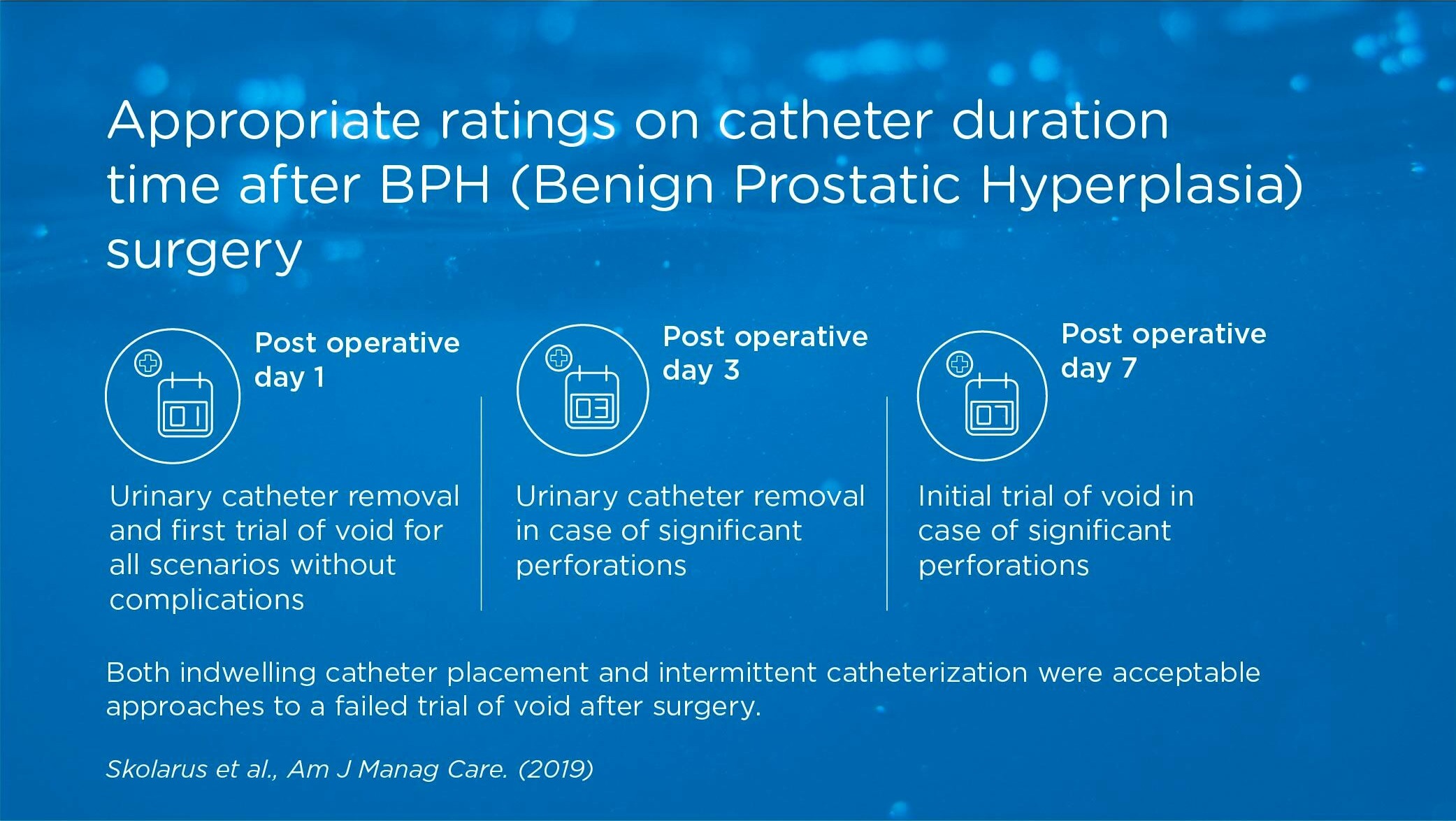Although urethral catheter placement is routine after surgical procedures of benign prostatic hyperplasia (BPH), no guidelines inform duration of catheter use.
Results from ratings provided by a multidisciplinary panel offer guidance in decreasing practice variation thereby reducing postoperative risks and improving the consistency and quality of care for patients undergoing surgery.

Benign prostatic hyperplasia (BPH) is a leading diagnosis among male medicare beneficiaries and approximately 100,000 men are treated with transurethral prostate (TURP) surgery each year. The procedure is performed using various approaches, but always involves urinary catheter placement, either intermittent catheterization or indwelling urinary catheters.
Although urethral catheter placement is routine after this common treatment, no guidelines inform duration of urinary catheter use.
Some providers recommend overnight urinary catheter placement, whereas others recommend leaving the catheter in place for days afterward.
- The publication by Skolarus et al clarifies appropriate urinary catheter durations to help improve consistency and quality of care for healthcare organizations and their patients, treated surgically for BPH.
- Using a standardized rating process (ie, the RAND/UCLA Appropriateness Methodology*), an 11-member multidisciplinary panel reviewed a literature summary and rated clinical scenarios for urethral catheter duration after surgery for BPH.
Based on the expert-panel ratings, results demonstrated that unless a clinically significant perforation occurred at the time of the surgical procedure, it was deemed appropriate for most patients to have their catheter removed for a trial of voiding on the first day after surgery.
- The panel uniformly rated both IC and indwelling urethral catheter placement as appropriate if the patient failed the first trial of void after BPH surgery.
- If an indwelling catheter was placed after an initial failed trial of void, the panel indicated that hospitalized patients should be given another trial of void within 1 or 2 days. For patients discharged home, the appropriate duration was extended up to 4 days to allow for a second trial of void.
This publication defined clinically relevant guidance statements for the appropriateness of urethral catheter duration after transurethral prostate surgery. Given the lack of guidelines and this robust expert panel approach, these ratings may help clinicians and healthcare systems improve the consistency and quality of care for patients undergoing transurethral surgery for BPH.
* The RAND/UCLA Appropriateness Method (RAM) was developed in the mid 1980s, as part of the RAND Corporation/University of California Los Angeles (UCLA) Health Services Utilisation Study, primarily as an instrument to enable the measurement of the overuse and underuse of medical and surgical procedures




